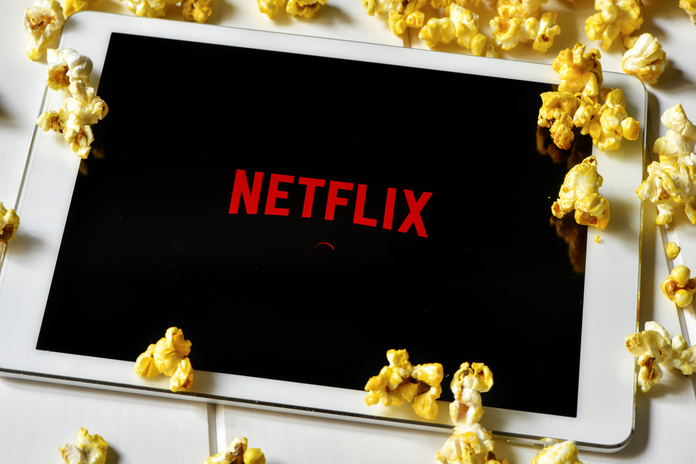Investment thesis
Long-term investors had an excellent chance due to the strong response to Netflix, Inc.’s (NASDAQ:NFLX) Q1 report. Even with the subsequent positive report, the stock still has a significant upside. The company’s management has provided a strategic plan for the upcoming year, outlining how the business will address issues. We continue to be optimistic about Netflix’s future.
Market trends and projections for streaming services
The industry of video-on-demand is still very new. The demand for streaming services has been rising quickly in recent years. Streaming successfully competes with theatres and has nearly wholly replaced the DVD business.
The COVID-19 epidemic had some positive effects on the VoD sector. Because of lockdowns, people were looking for virtual pastimes, and streaming services were among the top choices because of their affordability and wealth of content.
Despite the sector’s explosive expansion over the preceding five years, research organizations continue to foresee continued growth, albeit at a slower rate. Over the next six years, the streaming market will expand on average by 11%, predicts Statista.
According to Statista, the widespread use of these services is a significant factor in the slowdown. Between one-third and 50% of people in affluent nations had at least one membership to a service like Netflix or Amazon Prime (AMZN) in 2021, with many homes having multiple subscriptions active at once.
Expanding services across vital emerging areas, such as Asia and Latin America, is the primary driver. As a result, the growth potential of such markets for streaming firms is considerably constrained.
Several significant competitors are currently compelled to compete with one another for viewers in the streaming business. Because user absorption and retention are achieved mainly by high-profile releases (Stranger Things by Netflix, Obi-Wan Kenobi by Disney+, etc.), quality and quantity of content continue to be the primary sources of influence on consumers.
According to JustWatch, companies that are relatively new to the streaming services sector are continuing to exert more impact. We think that a relatively low base is one of the primary causes. The SVoD industry saw a major shift last year; as a result, it is now mature, and audience attrition in favor of newcomers that offer unique and original content is a consequential but constrained occurrence.
The success of the initial franchises directly impacts the likelihood of long-term struggle for the consumer. In this regard, even though it will lose some of its following, we anticipate Netflix to continue to dominate the global market.
The anticipated recession in the USA and the EU, the two biggest streaming services markets, is a hot subject this year. We anticipate that the industry will weather the current phase of economic sluggishness and declining real household income reasonably smoothly.
Since users can typically access an extensive library of content for a meager fee via streaming, the industry can weather the recession by offering less expensive alternatives to more expensive forms of entertainment (e.g., going to the cinema).
Cross-subscription to multiple services at once is a crucial factor in market analysis when determining the likelihood of a recession. In September 2021, Leichtman Research performed a poll, which revealed that almost 58% of homes were simultaneously enrolled in two or more streaming services. The declining real income could lead to a drop in overall market revenue as households are more likely to choose one service over multiple ones.
The monetization process propels growth
According to data from Statista and Netflix, the sector’s growth was aided not only by the addition of new consumers but also by a consistent increase in ARPU. Disney’s (DIS) declining ARPU can be attributed to the company’s expansion into new areas, which allowed it to attract cheaper users and shed light on the factors behind the service’s explosive subscriber growth.
On the other hand, more significant costs frequently come with higher rates of consumer churn. Due to increased competition, consumers will respond to price increases even more strongly. The price rise was cited by 69% of unsubscribers, according to a poll conducted by WhipMedia in June.
Companies facing competition must decide whether to keep raising ARPU at the cost of increased consumer churn or whether to test the quality of their business margin as content investment rises and subscriber growth does not match past rates.
Representatives of the market with additional revenue streams, such as Apple (AAPL), Amazon, and Disney, can afford to capture a large portion of the market at the expense of pricing because their core businesses generate enough revenue to support low-margin segments if there are sufficient opportunities in the future.
Although even the most expensive subscriptions are still affordable for the average household compared to other leisure pursuits, the long-term consideration of content quality will ultimately determine consumer preference. As a result, we do not anticipate any big dumping anytime soon.
The new style of service monetization, which uses more affordable ad-supported subscriptions, will be the key to striking a balance between ARPU growth and user adoption. According to The Streamable, businesses that have previously offered inexpensive memberships with advertisements have very devoted customers.
The new subscription versions won’t instantly produce favorable results in terms of ARPU, given the ongoing collapse of the internet advertising sector and the shrinking budgets of big businesses. However, over time, we anticipate that this strategy will improve financial outcomes, according to Nielsen.
Due to more precise targeting, ad placement on VoD is now more successful than on TV, accounting for around one-third of all video content consumed in the USA. Major streaming platforms switching to the new subscription model, like Netflix or Disney+, will significantly impact the advertising market because their advertising dollars will go to the new players.
As a result, we anticipate further growth in ARPU across the industry. Since there are less expensive alternatives for the price-sensitive audience segment, organizations can raise subscription costs without breaking any records for customer churn. Given the popularity of streaming, providers must make up the difference in the subscription price with ad income, which is anticipated to be sizable.
Netflix’s short-term difficulties
For a long time, Netflix has been the dominant force in the growth of the SVoD business. Despite dealing with new market realities and some challenges last year, the company was the industry’s innovator and is now its leader.
For Netflix, subscriber turnover due to competition is an unavoidable reality. In developed markets, when service availability was practically universal, it was well noticed. For instance, Netflix had a market share of over 40% in the USA in 2021 (based on annual revenue), making the observed customer churn in the first half of 2022 likely given the weakening economy and growing competition.
Asia is a crucial market for Netflix, and in recent years, the business has made significant investments in this region. The region continues to see robust subscriber growth, and the corporation has excellent potential to increase subscription fees there.
Additionally, as was already established, part of the company’s price rise policy is to blame for customer turnover. However, Netflix plans to implement subscriptions with integrated ads in 2023, so the new pricing option will lessen the impact of the price increase. Now, rather than adding more customers, we think that ARPU growth will be what drives Netflix’s financial outcomes.
Another significant issue for the business in the previous year was the so-called pooling of memberships. It occurs when multiple people utilize the same account at once without adding anything of value to Netflix. The management of the business is still looking for a route out. In certain Latin American nations, where the sharing issue is at its worst, it is testing a new approach.
The amount of the additional fee is now presented to the consumer and is based on the number of users. The management is pleased with the outcomes based on test findings from the year’s first half. According to the company’s financial statements, regional ARPU rose by 15% YOU. At the same time, the total number of subscribers at the end of the period was essentially unchanged.
In the future, Netflix will broaden the new feature’s geographic scope, and we anticipate that this will alleviate the sharing issue by adding another driver of ARPU growth.
Valuation
We anticipate that Netflix’s revenue will increase on average by 7.2%. ARPU expansion and the overseas market expansion will be the primary drivers.
Our prediction places the company’s stock at $425 per share. We continue to rate the firm as BUY and believe that NFLX stock is cheap. The upside is 93%.
Conclusion
We continue to have a favorable outlook on Netflix’s long-term prospects. Despite increased stock prices following the Q2 report, the market’s response to the Q1 report was incredibly damaging, and shares still have a significant upside.
Although we think Netflix is an undervalued growth company, the upgraded account monetization program will primarily be responsible for the firm’s financial performance. Although our valuation indicates BUY status at the current levels for Netflix stock, given the firm’s significant volatility in the last year, we advise scaling back your position because a loss in the major indices is likely to cause the price of the company’s shares to decline even more.
We advise keeping a watch on Netflix financials, industry analytical research (such as Leichtman Research, JustWatch, Nielsen), and timetable and release data of new films and TV episodes, as they heavily influence the success of Netflix quarterly reports, to manage the position.
Featured Image: Megapixl © Nito100















